HTML
--> --> -->Nowadays, a large number of nuclear power plants are in operation owing to the greenhouse effect and energy shortages [19]. This brings the corresponding problem of radioactive waste disposal [20-22]. To solve this problem, researchers both in nuclear engineering and nuclear physics are focused on investigating the transmutation of the radioactive waste. In this regard, an experimental study showed that spallation reactions are a promising mechanism for the transmutation of long-lived fission products (LLFPs) [23]. In 2017, both proton- and deuteron-induced spallation reactions at 100-200 MeV/nucleon were measured. It was confirmed that both reactions are effective for the transmutation of
Accurate cross section data of deuteron-induced spallation reactions are essential to design a viable and stable transmutation system using the deuteron. Owing to the difficulty of experimental measurements at this stage, data available in this scenario are still lacking [18], especially high-energy data. Nowadays, several deuteron experimental investigations have achieved great success, but the maximum experimental energy is still lower than 200 MeV/nucleon [26-28]. Therefore, a study on deuteron-induced reactions in the GeV/nucleon energy region is still necessary in this case.
On the other hand, data of the neutron-induced spallation are still required in the study of fast reactors and accelerator driven sub-critical systems (ADS) [29, 30]. In addition, these data are still very limited at present because of the difficulty to obtain neutrons in the GeV region and the impossibility of inverse dynamics [31-33]. In a previous study of ours, deuteron-induced spallation was proposed to measure indirectly the cross sections in neutron-induced reactions at hundreds of MeV [34]. However, a further study on the dynamics of neutron stripping in deuteron-induced spallation is needed. In this study, a simple model was developed to examine the mechanism of deuteron breakup and calculate the cross sections of neutron-stripping and proton-stripping reactions
The paper is organized as follows. In Sec. II, the method is described. In Sec. III, both the results and discussions are presented. Finally, a summary is given in Sec. IV.
2
A.Trajectory of incident nucleon by classical mechanics
It is assumed that the mean field provided by the target nucleus stays static during the interaction. The time evolution of the incident nucleon in the mean field is governed by the Newtonian equation of motion $ \vec{F} = \mu\frac{{\rm d}^{2} \vec{r}}{{\rm d}t^{2}}, $  | (1) |
$\overrightarrow {{F_c}} (r) = \left\{ {\begin{array}{*{20}{l}}{\dfrac{{CZzr}}{{{R^3}}}\dfrac{{\vec r}}{r},\quad }&{r < R}\\{\dfrac{{CZz}}{{{r^2}}}\dfrac{{\vec r}}{r},\quad }&{r \geqslant R}\end{array}} \right. $  | (2) |
The nuclear force is written as
$ \begin{aligned}[b] \vec{F_{n}}(r) =& -\frac{\partial V_{n}}{\partial r}\frac{\vec{r}}{r}, \\ V_{n} =& \alpha\frac{\rho}{\rho_{0}}+\beta\frac{\rho^\gamma}{\rho_{0}^\gamma} +\frac{C_{sp}(\gamma_{i}+1)}{2}\frac{\rho^{\gamma_{i}}}{\rho_{0}^{\gamma_{i}}} \delta ^{2} +\frac{|\tau|}{\tau} \frac{C_{sp}}{2}\frac{\rho^{\gamma_{i}+1}}{\rho_{0}^{\gamma_{i}}}2\delta,\end{aligned} $  | (3) |
The following form of the nucleon density was used:
$ \rho_{i}(r) = \dfrac{\rho_{i0}}{1+{\rm exp}\left(\dfrac{r-R_{i}}{d_{i}}\right)}, $  | (4) |
$ \begin{aligned}[b] \rho_{p_{0}}+\rho_{n_{0}} &= \rho_{0},\\ \frac{\rho_{p_{0}}}{\rho_{n_{0}}} &= \frac{Z}{N},\\ \int\rho_{p}(r){\rm d}\vec{r} &= Z,\\ \int\rho_{n}(r){\rm d}\vec{r} &= N,\\\int{r}^2\rho_{p}(r){\rm d}\vec{r} &= Z\langle{r}^2\rangle_{p},\\ \int{r}^2\rho_{n}(r){\rm d}\vec{r} &= N\langle{r}^2\rangle_{n}, \end{aligned} $  | (5) |
Solving the equation of motion, i.e., Eq. (1), with initial conditions depending on impact parameter b and incident energy
2
B.Total reaction cross section of the reaction between nucleon and nucleus
Suppose that a nucleon beam with intensity I passes through a nuclear matter with density $ \frac{{\rm d}I}{I} = -\sigma\rho {\rm d}x, $  | (6) |
$ P = \frac{I^{\rm out}}{I^{\rm in}} = {\rm exp}\left [-\int_{-\infty}^{+\infty} \sigma \rho v {\rm d}t\right]. $  | (7) |
$ \sigma_{t} = \int_{0}^{+\infty}2\pi b[1-P(b)]{\rm d}b. $  | (8) |
$\sigma _{pp}^{\rm free} = \sigma _{nn}^{\rm free} = \left\{ {\begin{array}{*{20}{l}}{34{{\left( {\dfrac{{{p_{{\rm{lab}}}}}}{{0.4}}} \right)}^{ - 2.104}},}&{{p_{{\rm{lab}}}}\leqslant 0.4}\\{23.5 + 1000{{\left( {{p_{{\rm{lab}}}} - 0.7} \right)}^4},}&{0.4 < {p_{{\rm{lab}}}}\leqslant 0.8}\\{23.5 + \dfrac{{24.6}}{{1 + \exp \left( { - \left( {{p_{{\rm{lab}}}} - 1.2} \right)/0.10} \right)}},}&{0.8 < {p_{{\rm{lab}}}}\leqslant 1.5}\\{41 + 60\left( {{p_{{\rm{lab}}}} - 0.9} \right)\exp \left( { - 1.2{p_{{\rm{lab}}}}} \right),}&{1.5 < {p_{{\rm{lab}}}}\leqslant 5.0}\end{array}} \right.$  | (9) |
$ \sigma _{np}^{\rm free} = \sigma _{pn}^{\rm free} = \left\{ {\begin{array}{*{20}{l}}{6.3555p_{\rm lab}^{ - 3.2481}\exp \left( { - 0.377{{\left( {\ln {p_{{\rm{lab}}}}} \right)}^2}} \right),}&{{p_{{\rm{lab}}}} \leqslant 0.4}\\{33 + 196{{\left| {{p_{{\rm{lab}}}} - 0.95} \right|}^{2.5}},}&{0.4 < {p_{{\rm{lab}}}} \leqslant 1.0}\\{24.2 + 8.9{p_{{\rm{lab}}}},}&{1.0 < {p_{{\rm{lab}}}} \leqslant 2.0}\\{42,}&{2.0 < {p_{{\rm{lab}}}} \leqslant 5.0}\end{array}} \right.$  | (10) |
$\sigma \rho = \left\{ {\begin{array}{*{20}{l}}{\sigma _{pp}^{\rm free}{\rho _p} + \sigma _{pn}^{\rm free}{\rho _n},\quad {\rm for}\; p\; {\rm reaction}}\\{\sigma _{nn}^{\rm free}{\rho _n} + \sigma _{np}^{\rm free}{\rho _p},\quad {\rm for}\;n\; {\rm reaction}.}\end{array}} \right.$  | (11) |
Third, the in-medium factor proposed by Cai et al. [40] was considered.
$ \sigma \rho = \left\{{\begin{array}{*{20}{l}}{\sigma _{pp}^{\rm med}{\rho _p} + \sigma _{pn}^{\rm med}{\rho _n},\quad {\rm for}\; p\; {\rm reaction}}\\{\sigma _{nn}^{\rm med}{\rho _n} + \sigma _{np}^{\rm med}{\rho _p},\quad {\rm for}\; n\; {\rm reaction},}\end{array}} \right.$  | (12) |
$ \begin{aligned}[b]&\sigma_{p p}^{\rm med} = \sigma_{n n}^{\rm med } = \frac{1.0+0.1667 E_{\rm lab}^{1.05} \rho^{3}}{1.0+9.704 \rho^{1.2}} \sigma_{p p}^{\rm free}, \\ &\sigma_{n p}^{\rm med} = \sigma_{pn}^{\rm med} = \frac{1.0+0.0034 E_{\rm lab}^{1.51} \rho^{2}}{1.0+21.55 \rho^{1.34}} \sigma_{n p}^{\rm free}, \end{aligned} $  | (13) |
2
C.Deuteron-induced reaction
Let us assume that the positions of proton and neutron in the deuteron satisfy a Gaussian distribution. Let the center of the deuteron be at the origin of the coordinates; then, the probability density function that the neutron or proton is at point $\begin{aligned}[b] f =& A\exp\left(-\frac{x_{d}^2+y_{d}^2+z_{d}^2}{L}\right)\\ =& A\exp\left(-\frac{r_{d}^2}{L}\right),\end{aligned} $  | (14) |
$ \int f(r_{d}){\rm d}\vec{r_{d}} = 1, $  | (15) |
$ \int {r_{d}}^2 f(r_{d}){\rm d}\vec{r_{d}} = \langle{r}^2\rangle = (2.1421)^2{\rm fm}^{2}. $  | (16) |
The deuteron-induced reaction is equivalent to one neutron and one proton reacting with the target nucleus. Let deuteron be incident with impact parameter b in the z-axis direction, and let us establish coordinates with deuteron center as origin. Then, according to the determined Gaussian distribution function, the probability of the neutron being located at point
$ b_{p} = \sqrt{(b-x_{d})^2+y_{d}^2},\quad b_{n} = \sqrt{(b+x_{d})^2+y_{d}^2}. $  | (17) |
$\begin{aligned}[b] \sigma_{d-ABS} =& \int 2\pi bdb\:\:[1-P_{n}(b_{n})][1\\&-P_{p}(b_{p})] \:\:f {\rm d}x_{d}{\rm d}y_{d}{\rm d}z_{d}, \end{aligned}$  | (18) |
$ \sigma_{p-NEB} = \int 2\pi bdb\:\: P_{n}(b_{n})[1-P_{p}(b_{p})] \:\: f {\rm d}x_{d}{\rm d}y_{d}{\rm d}z_{d}, $  | (19) |
$ \sigma_{n-NEB} = \int 2\pi bdb\:\:[1-P_{n}(b_{n})]P_{p}(b_{p}) \:\: f {\rm d}x_{d}{\rm d}y_{d}{\rm d}z_{d}. $  | (20) |
$ \sigma_{t} = \sigma_{d-ABS}+\sigma_{p-NEB}+\sigma_{n-NEB}. $  | (21) |
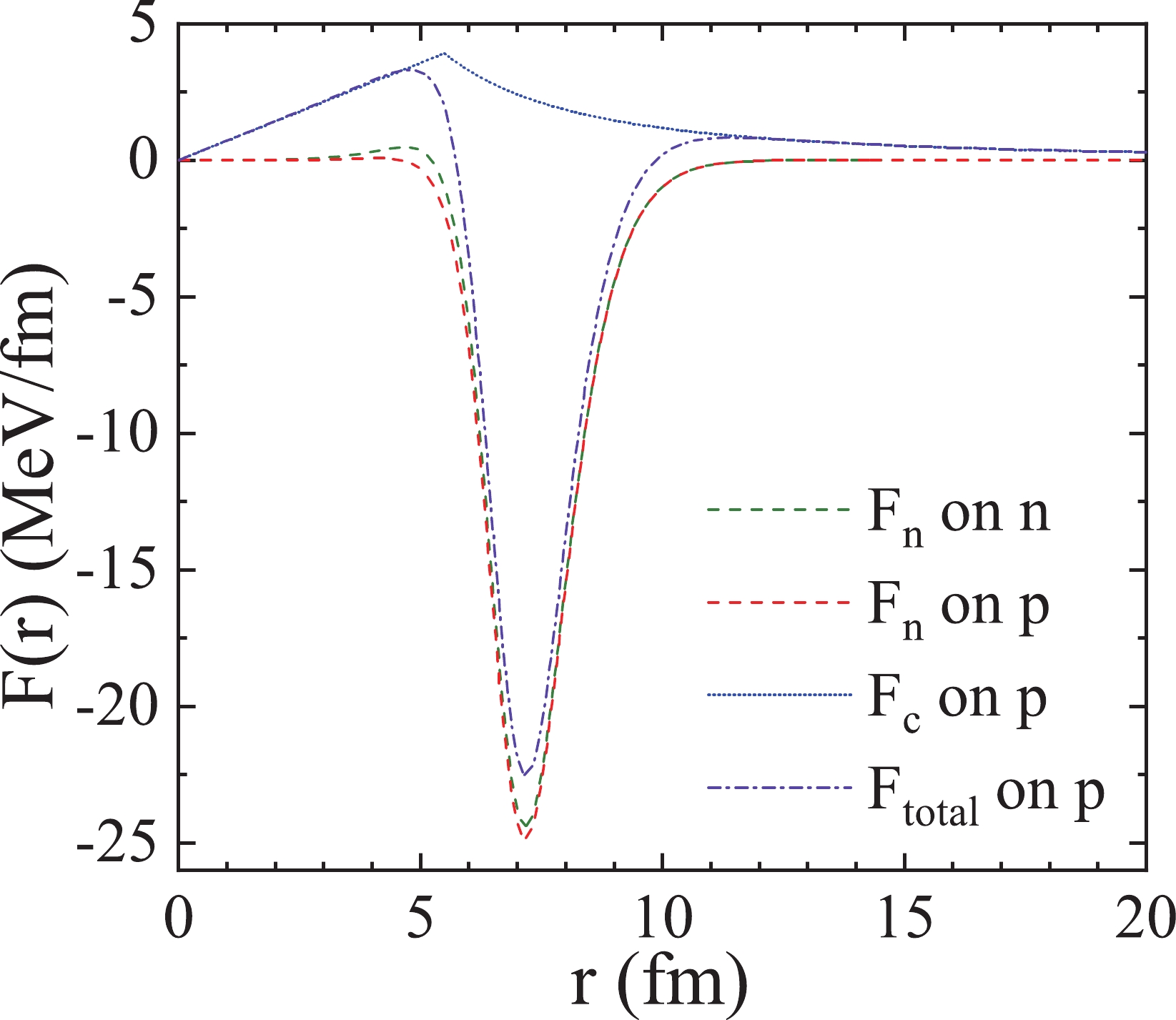 Figure1. (color online) Forces on the nucleons in the reaction nucleon +
Figure1. (color online) Forces on the nucleons in the reaction nucleon + Figure 2 shows the trajectories of neutron and proton in reactions n +
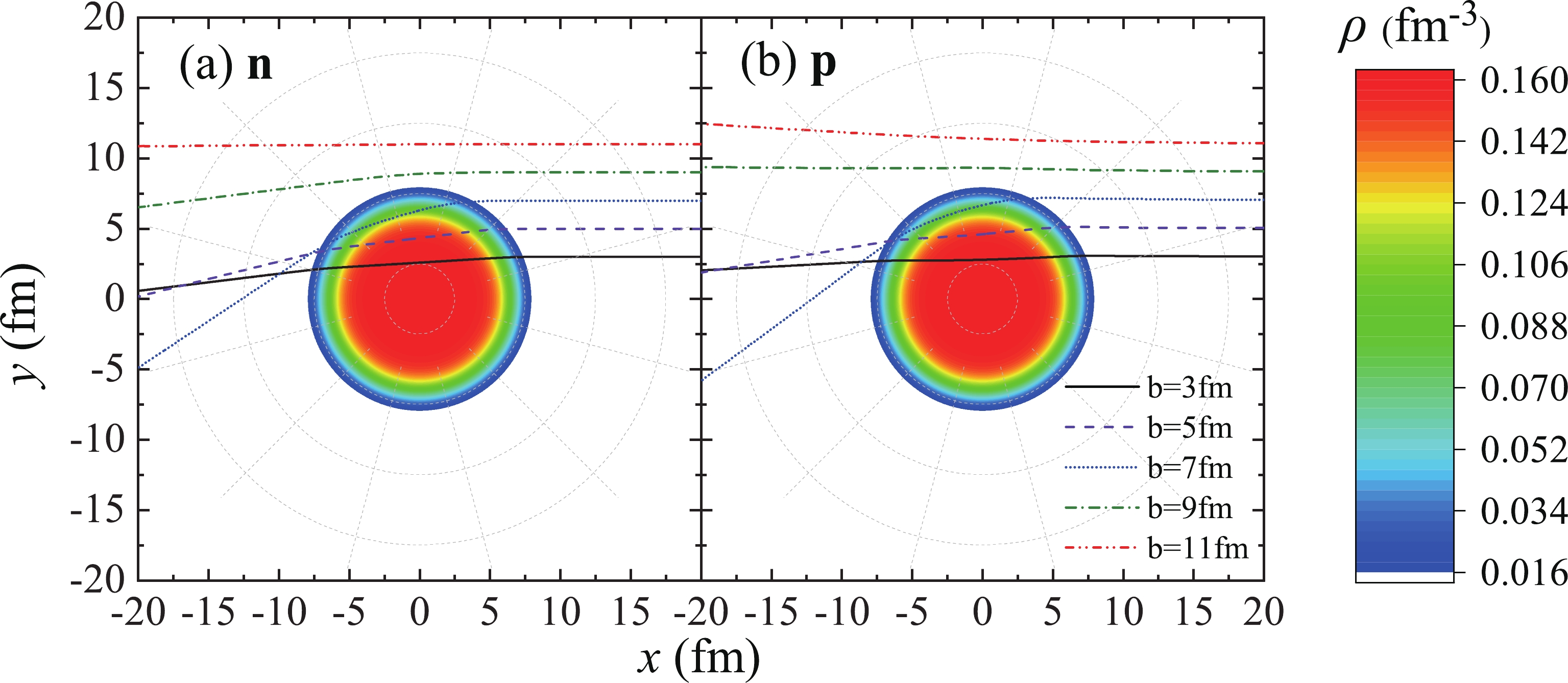 Figure2. (color online) Trajectories of neutron and proton in reactions n +
Figure2. (color online) Trajectories of neutron and proton in reactions n + Figure 3 is very similar to Fig. 2. It compares the trajectories of nucleons with different incident energies at the same impact parameters b = 7 fm in reactions n +
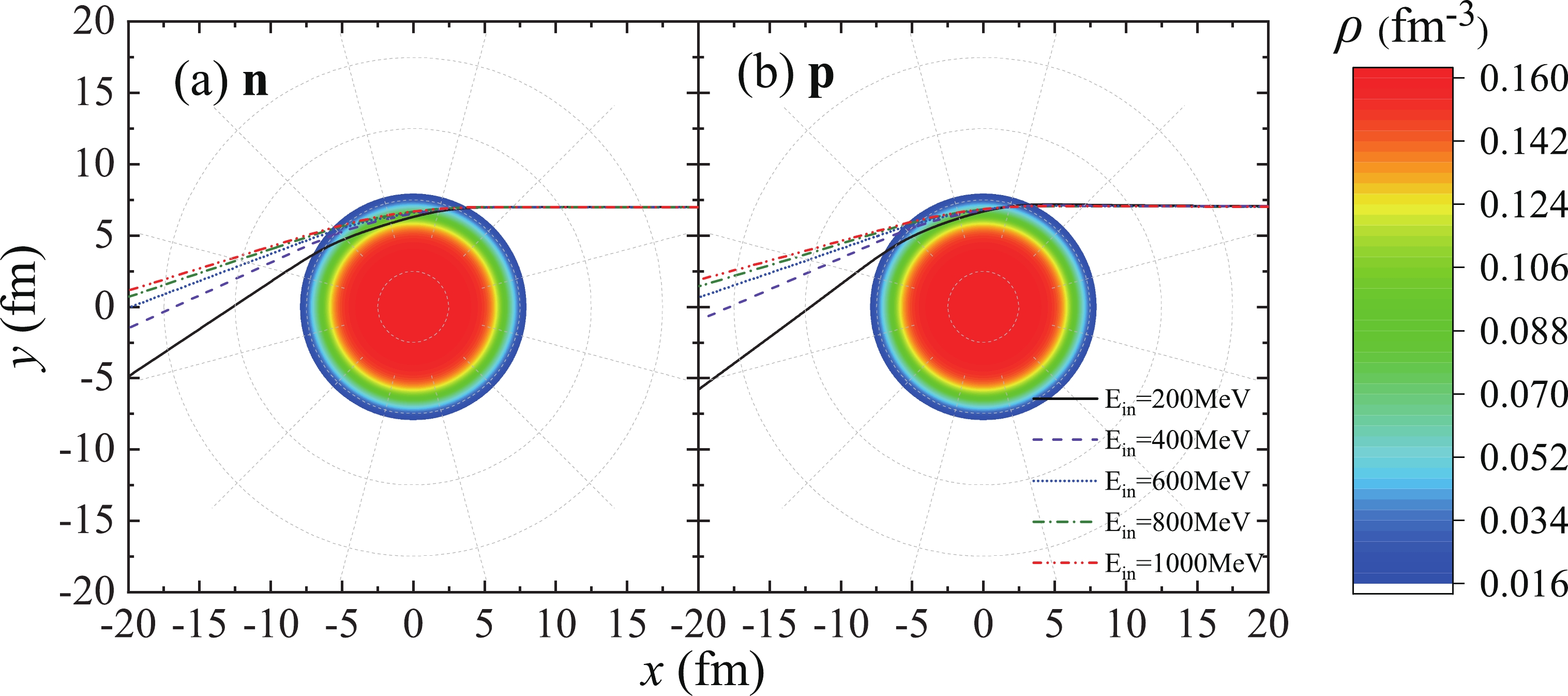 Figure3. (color online) Same as Fig. 2 but for the trajectories of neutrons and protons at b = 7 fm. The different curves represent the trajectories of nucleons with different incident energies.
Figure3. (color online) Same as Fig. 2 but for the trajectories of neutrons and protons at b = 7 fm. The different curves represent the trajectories of nucleons with different incident energies.In the calculation using 40 mb, the probability of no collision is only related to the nucleon trajectory and density distribution of target nucleus. According to Eq. (7), it is evident that the probability of no collision
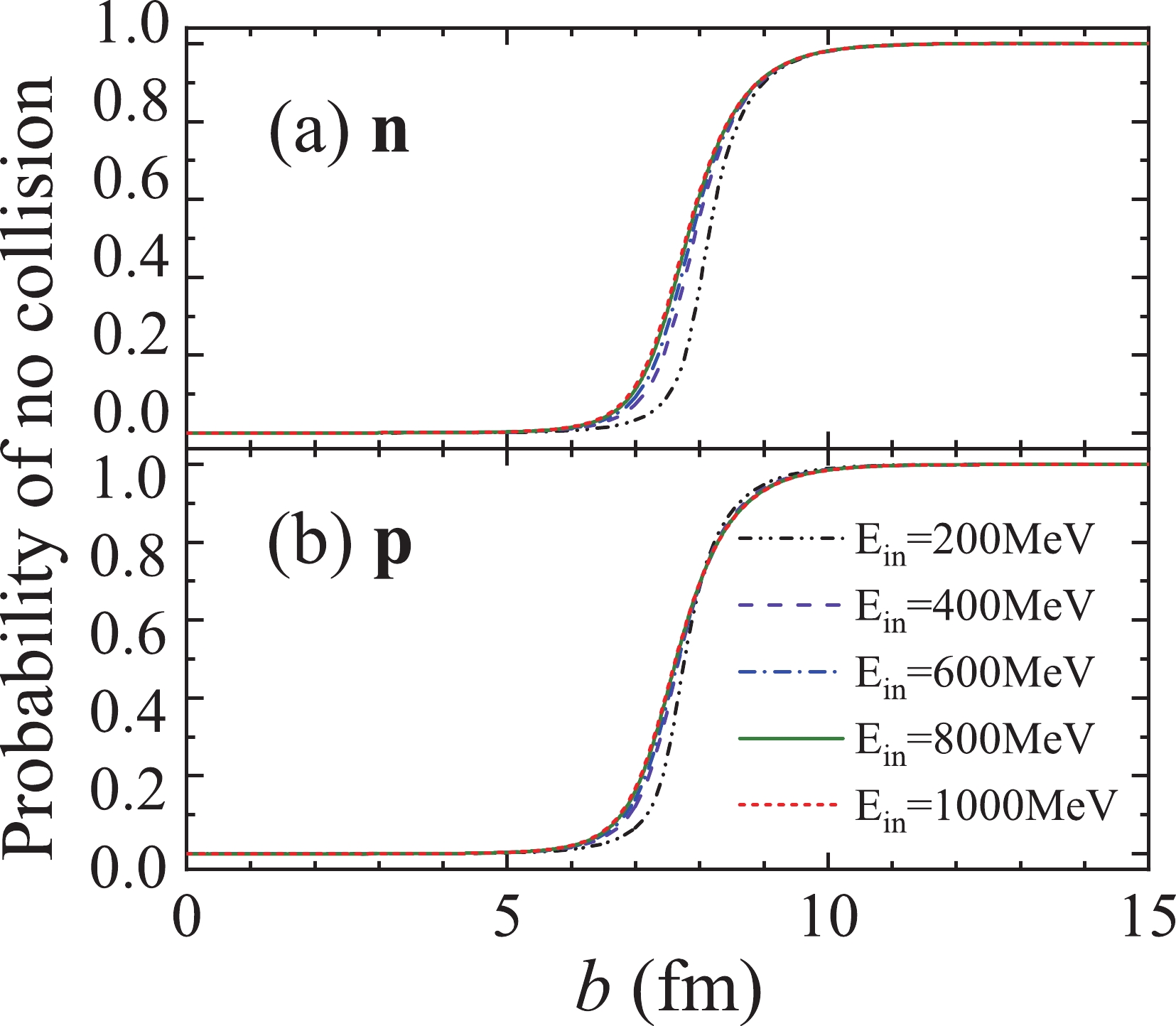 Figure4. (color online) Comparison of the probability of no collision
Figure4. (color online) Comparison of the probability of no collision Fig. 5 presents a comparison between the
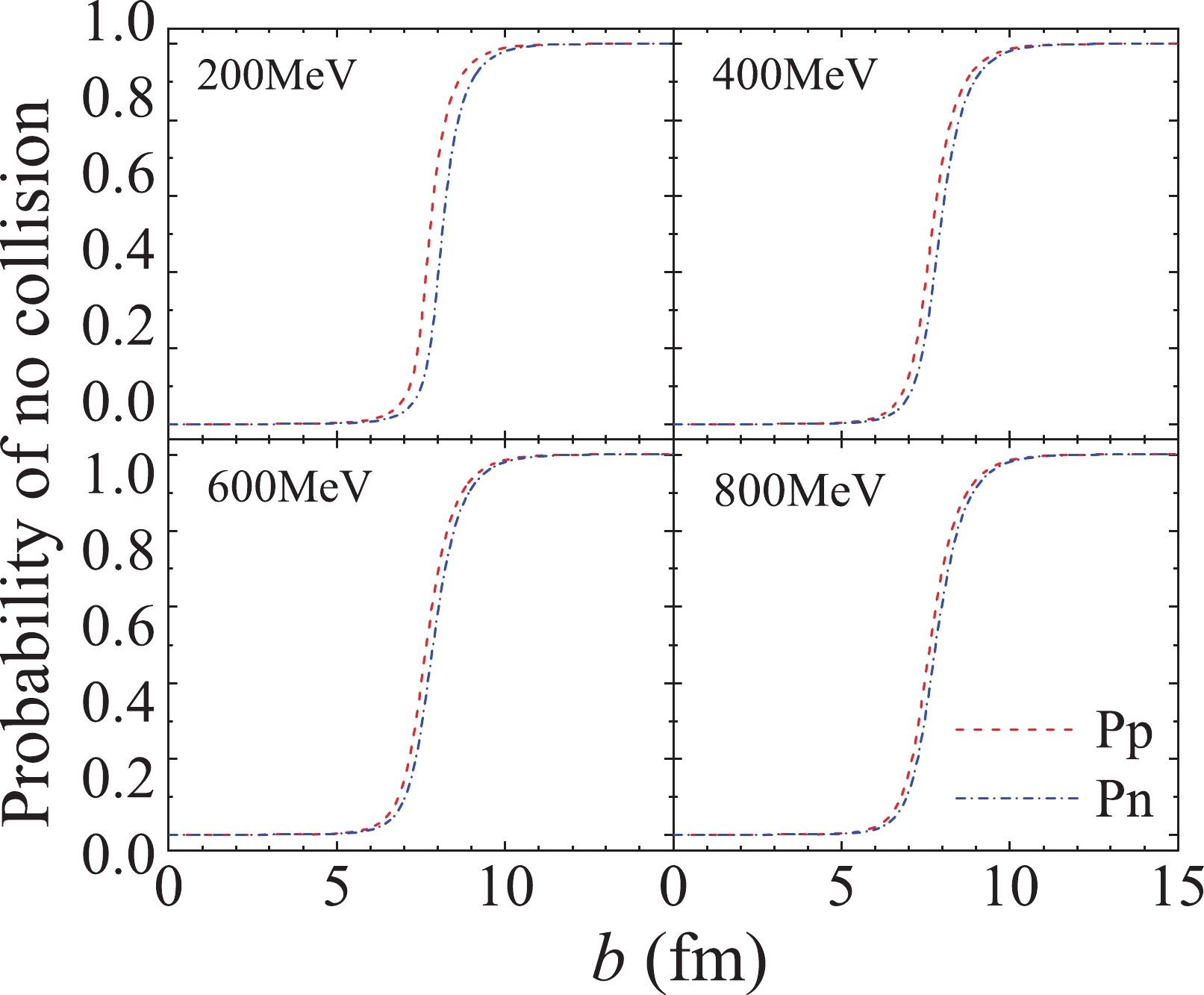 Figure5. (color online) Comparison between the
Figure5. (color online) Comparison between the To test the calculations using three type cross sections, the proton reaction cross sections were calculated and compared to the experimental data. Fig. 6 presents the cases for p +
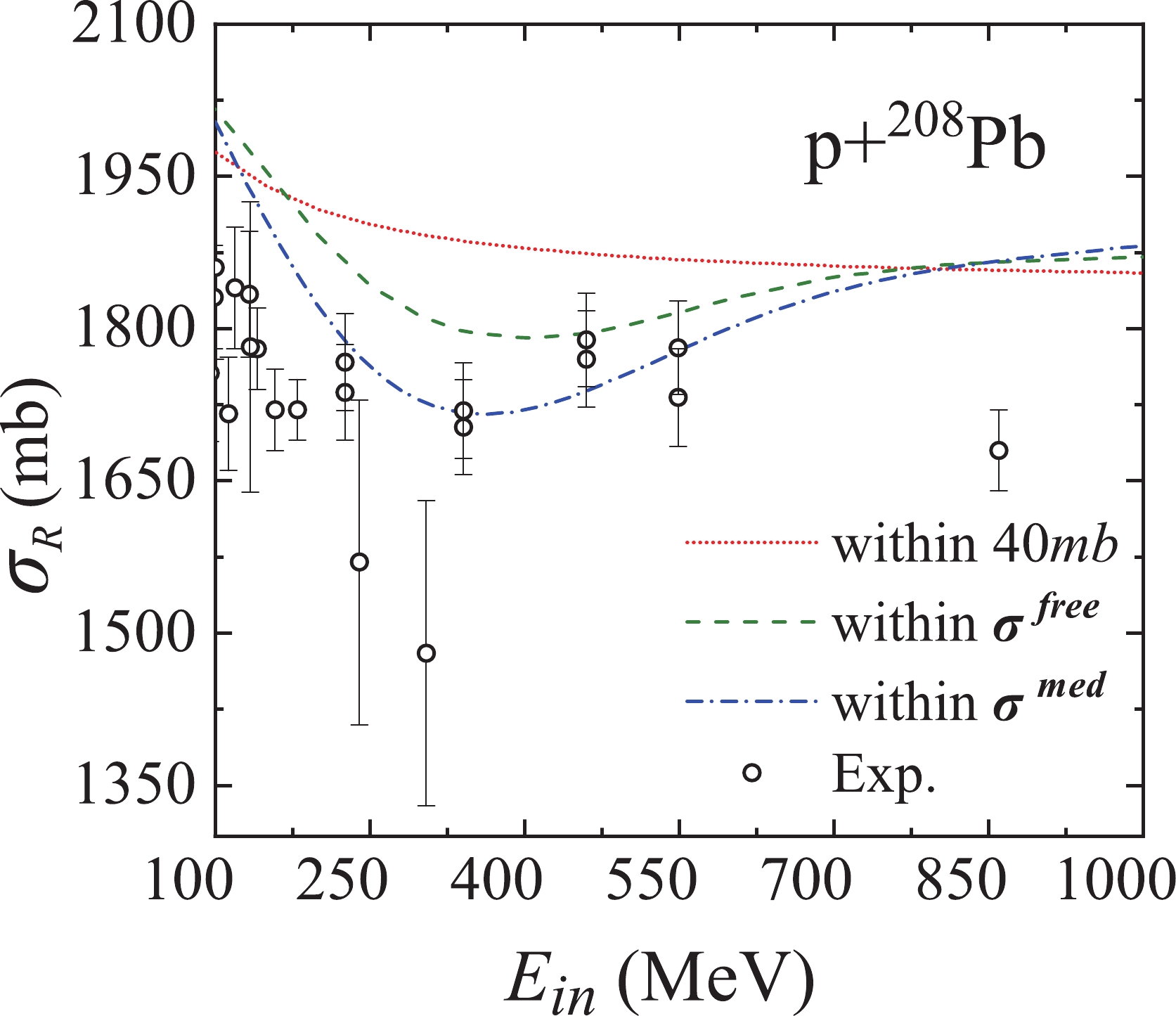 Figure6. (color online) Calculated reaction cross sections by using three cross sections and experimental data for the p +
Figure6. (color online) Calculated reaction cross sections by using three cross sections and experimental data for the p + In the calculation using cross section in free space, a correction of the nucleon energy was added. The cross section of the nucleon-nucleon collision in free space is calculated by Eqs. (9) and (10). With the increase of energy, the cross section in free space shows a downward trend first and then slowly rises. This leads to a similar trend in the proton reaction cross section calculated by this method. Note that in Fig. 6, a significant effect was produced after using cross section in free space: the results became closer to the experimental data than previous results. However, they are still far from ideal.
In the calculation using in-medium cross section, a medium correction was added on the basis of energy correction. In this case, the nucleon-nucleon collision cross section depends on both energy and nuclear density. Fig. 6 shows that the results obtained by this calculation are closer to most experimental data than other calculations, thereby proving the validity of this calculation.
To test the calculation using in-medium cross section further, the model was used to study more nucleon-nucleus reactions for comparison with experimental data. Figure 7 shows the total reaction cross sections for
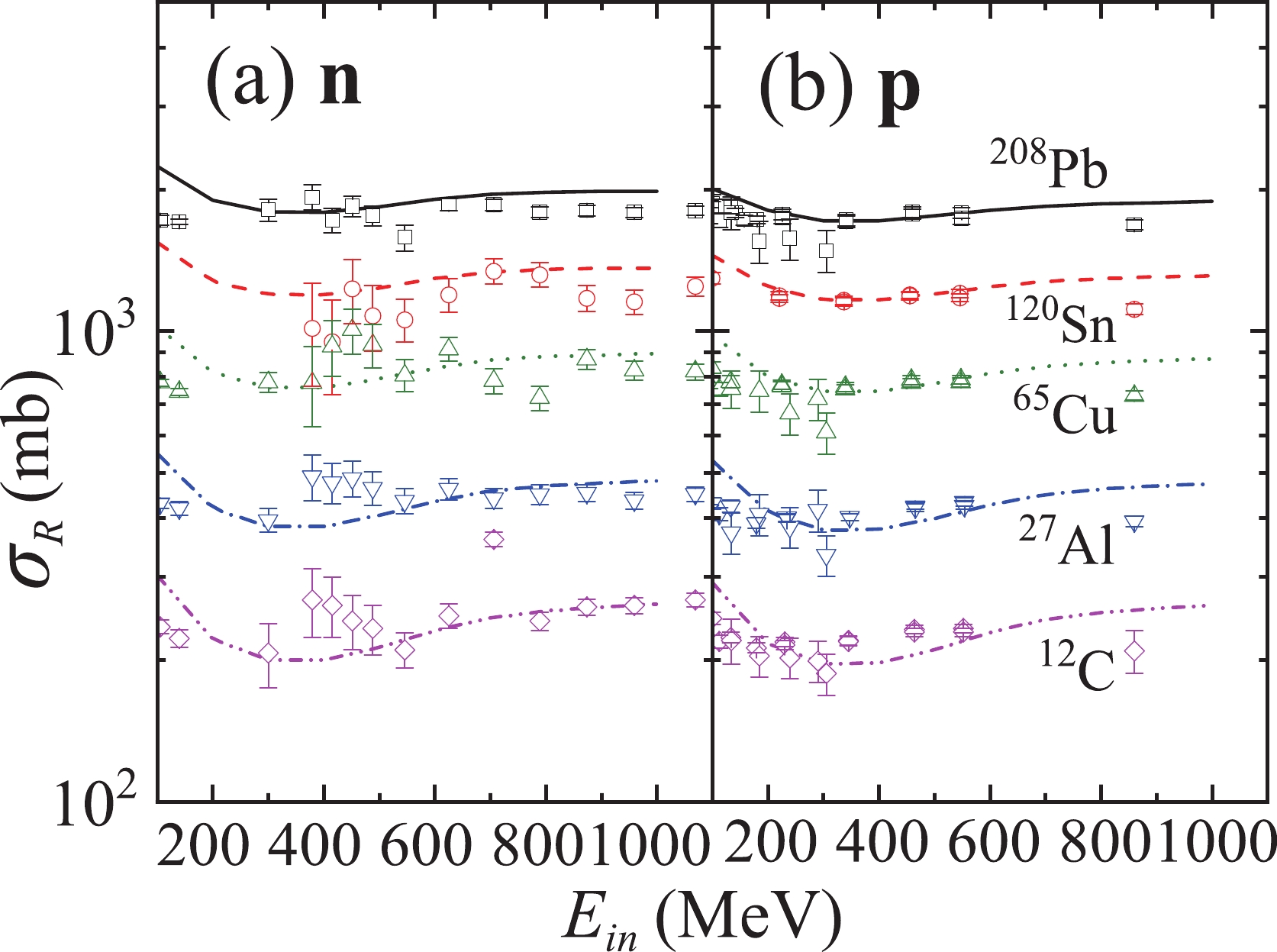 Figure7. (color online) Calculated nucleon-nucleus reaction cross sections by using in-medium cross section for
Figure7. (color online) Calculated nucleon-nucleus reaction cross sections by using in-medium cross section for In Ref. [44], deuteron-nucleus total reaction cross sections up to 500 MeV/nucleon were calculated by the CDCC model. The data in 0-100 MeV/nucleon region is consistent with existing experimental data. To investigate the calculation using in-medium cross section further, the results were compared to the results of CDCC in Ref. [44]; the comparison is shown in Fig. 8. For d +
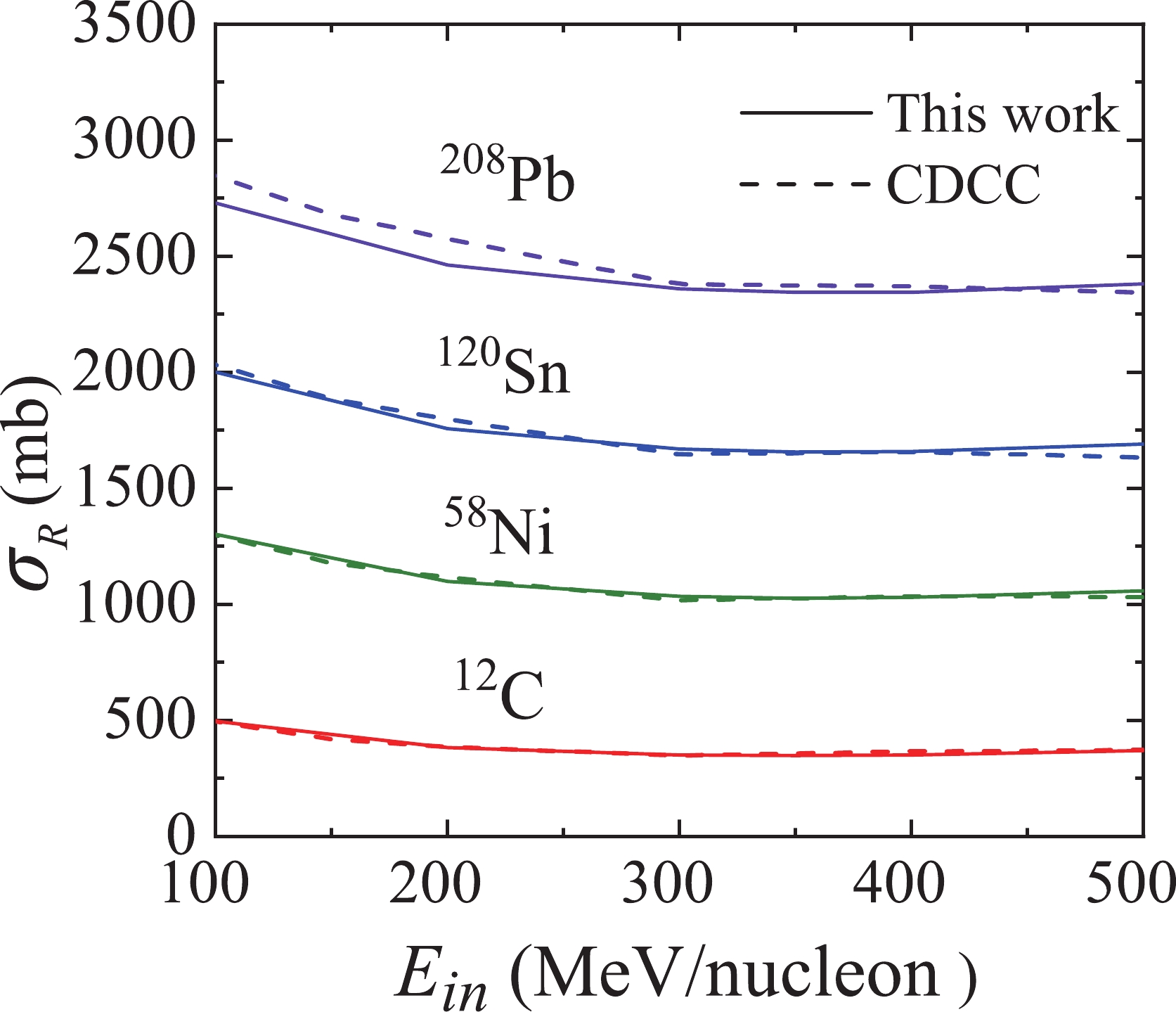 Figure8. (color online) Calculated deuteron-nucleus total reaction cross sections by using in-medium cross section for
Figure8. (color online) Calculated deuteron-nucleus total reaction cross sections by using in-medium cross section for Based on the consistency of this calculation with the experimental results and the calculations of the CDCC model, we continued to apply this method to study the nucleon stripping in deuteron-induced spallation reactions. Deuteron-nucleus total reaction cross sections calculated by using in-medium cross section are a sum of deuteron absorption cross sections and nucleon stripping cross sections. Figure 9 shows the calculated total reaction cross section and its components by using in-medium cross section for d +
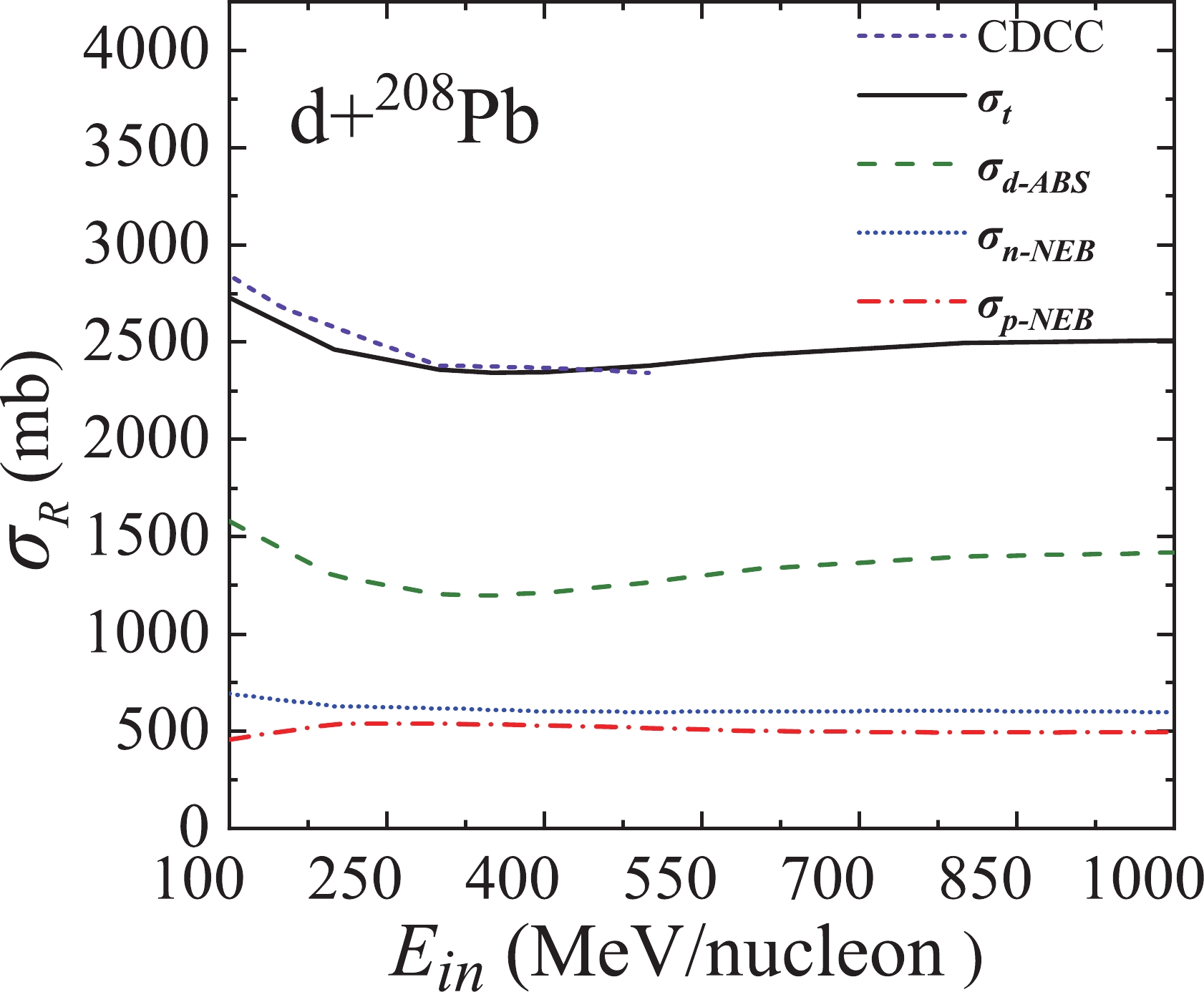 Figure9. (color online) Calculated total reaction cross section and its components by using in-medium cross section for d +
Figure9. (color online) Calculated total reaction cross section and its components by using in-medium cross section for d + Figure 10 depicts the same as Fig. 9 but for the d +
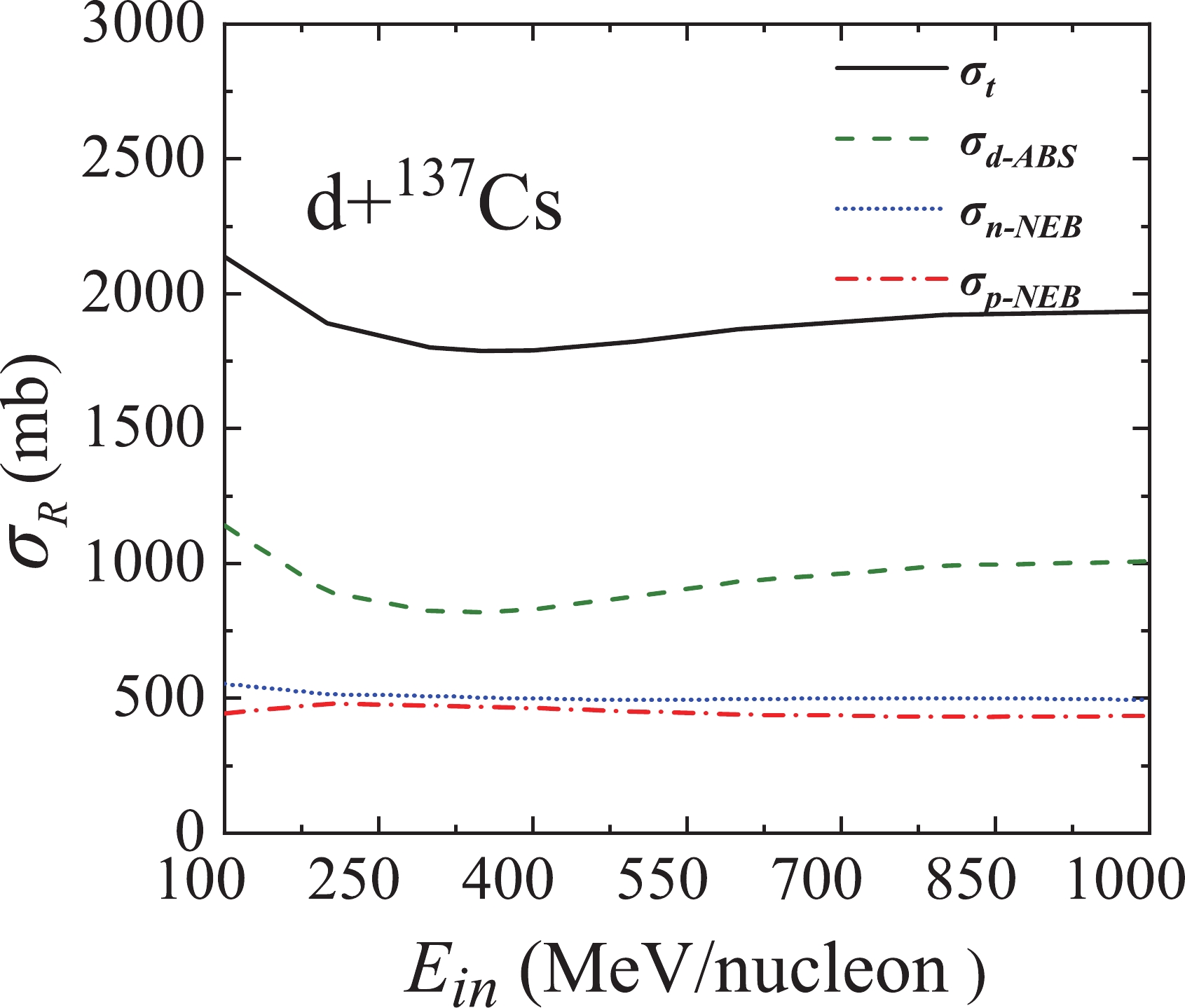 Figure10. (color online) Same as Fig. 9 but for the d +
Figure10. (color online) Same as Fig. 9 but for the d + To verify this trend, the proportional contributions of
 Figure11. (color online) Proportional contributions of
Figure11. (color online) Proportional contributions of After obtaining the results of the proportional contribution of the three components, these data can be applied to the transmutation study of
Figure 12 presents the relation between the proportion of
 Figure12. (color online) Proportion of
Figure12. (color online) Proportion of Then, the model was applied to investigate the nucleon stripping in deuteron-induced reactions. It was found that nucleon stripping processes play a significant role in deuteron-induced reactions at hundreds of MeV/nucleon, especially for light nucleus reactions. For the reactions at 500 MeV/nucleon, the contributions of the nucleon-stripping cross sections to the total reaction cross sections decreased from 83% for
